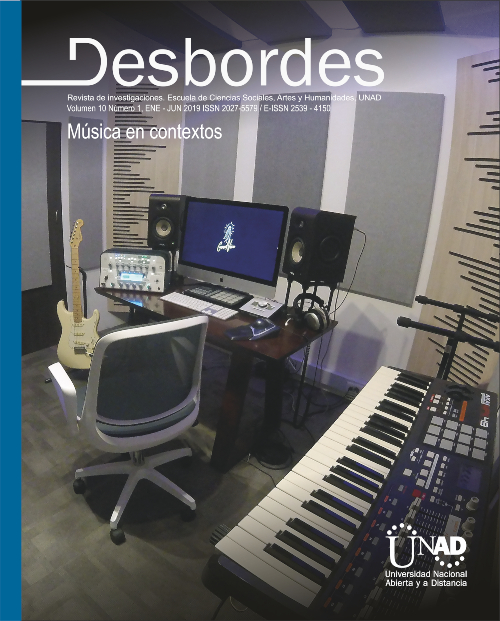La revista Desbordes se reserva el derecho de reproducción total o parcial del material en medio físico o digital, así como su inclusión en bases de datos, hemerotecas y demás procesos de indexación (SIRes).
La aceptación o rechazo de artículos postulados dependerá del concepto final emitido por los pares evaluadores y el aval de los comités editorial y científico.
Las ideas y conceptos expresados son responsabilidad de los autores y, en ningún caso reflejan las políticas de la UNAD
Guitar method, a challenge within the virtual universe
The purpose of this paper is to present a proposal for innovation in the musical artistic field aimed to develop a method for the instrumental learning of acoustic guitar; this paper cites musicians who are recognized throughout history for their teachings, compositional, artistic and methodological contributions in guitar such as: Dionisio Aguado, Fernando Sor, Francisco Tárrega, Andrés Segovia, Abel Carlevaro, Leo Brouwer, Eduardo Fernández, Gentil Montaña, among others. On the other hand, terms of didactics and pedagogy, compositional aspects based on Colombian music and technological features have been reviewed in order to be applied in distance mode and in virtual learning environments. The methodology used was the qualitative research approach, which suggests that it produces descriptive data, transporting the researcher to adopt particular points of view regarding the studied phenomenon. For data collection technique, the structured survey has been used; it is predestined to obtain data which is relevant for the purpose of the research. This research process has been based on Griffin and Holland, Lozada, Valverde and Correa which propose the applicability of technology in musical skills development; It has also been based on theorists such as Fernández Huerta, Mallart and their contributions to Didactics, Jorquera and their concept of method in music.
Another relevant aspect in this article is the inclusion of didactic sections of the music theory and colors written by Master Estela Cabezas, since relating colors to musical notes and their applicability for instrumental reading is of great help for those who do not have prior knowledge in the instrument, the instrumental vision must also be clear enough so that basic elements are taken up for their functional interpretation.




